As part of my research on Devi temples of India and sacred spaces associated with Shakti, I came across the mention of Mundeshwari Devi and her temple. Images from the internet showed a single stone temple with an absent Shikhara. After spending some time on Google Maps, I marked it as to be visited from Varanasi.
This time, when I had a chance to spend 2 months in Varanasi, I visited the temple on a weekend. It is about 100 kms from Varanasi and can easily be done as a day trip, or even a half-day trip.

Technically the temple is in Bihar. Kaimur Hills are beautiful hills that simply stand out on the otherwise plains of the Ganga River. On the way, we crossed the old bridge on the Karmanasha river which finds a mention in many Puranas. Instead of taking the highway, we took the village road and it was a bumpy yet enjoyable ride through the lush green Gangetic plains.
A detour after Chainpur leads to the base of the Piwara hill, rather a 600-foot-high rocky outcrop. Temple shops can be found at the base along with a forest entry post. Simply follow the vehicles and you will soon be climbing on the narrow steep road leading to the temple at the top. After the non-existent car parking, we were at the base of the well-laid and covered staircase that would take us to the temple. The temple arch announces it as Mundeshwari Dwar or the doorway to the abode of Ma Mundeshwari.
Oldest Living Temple in India – Mundeshwari Devi Temple
ASI has dated the oldest parts of Mundeshwari temple at 108 CE based on the inscriptions found on site recently. This makes it the oldest living Hindu temple in the world. There are inscriptions that point to 389 CE, even this date makes it the oldest living temple in India.
Many stone sculptures have been dated back to the Gupta period.
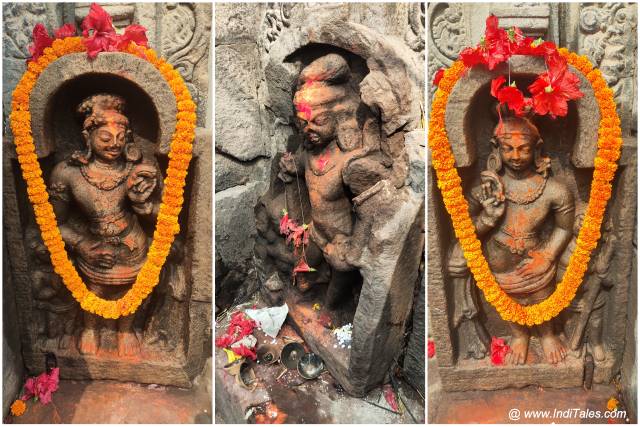
Almost all travelers to India, like 7th CE Chinese travelers Huan Tsang and Daniel Brothers who traveled in 18th CE, have mentioned this temple in their travelogues.
A Brahmi script seal of Srilankan king Dhutthagamini dating to 1st BCE has also been found here in 2003, pushing the date of this temple back.
A book on this temple published by Jnanapravaha has documented hundreds of inscriptions found at this temple.
Legends of Mundeshwari Devi
It is known by the name Mundeshwari, which Ma Durga was called when she killed the Asura Munda. Remember, Chanda and Munda from the third Charita of Durga Saptashati. It is believed that the Munda Asura was killed here on this hill. Another legend says that she appeared from the head of Munda asura after he was killed.

Another legend says that Devi here is called Mandaleshwari, meaning the presiding deity of the Mandala around the hill. The name later became Mundeshwari. As per this theory, the central temple belonged to Shiva as Mandaleshwara and there was another temple dedicated to his consort Mandaleshwari. Linga here is also called Viniteshwara as per local records.
Indeed, when you stand on the temple site today, you see the debris of many more temples around the main or the only temple that survives today.
Some accounts also treat her as Varahi, who rides a buffalo. It is difficult to assess in the absence of a clear picture of the image.
Another oral story says that Sri Ram on his journey to Mithila built this temple from a single rock.
Ahimsak Bali or Bloodless Sacrifice
Mundeshwari temple has a unique tradition. Here the animal sacrifice is offered to the Devi but without really hurting the animal. So, a goat or a sheep is brought to the temple. It is worshiped with rituals and then taken to the Murti of Devi inside the temple.
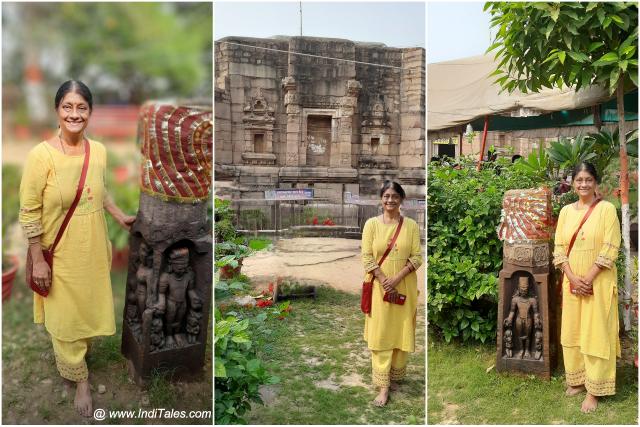
The animal is offered at the feet of the Devi. For a few moments the animal goes numb and you almost feel it is dead. But as soon as the priest sprinkles water and Akshat on it, it waked up, as if waking up from a slumber. It is free to go anywhere from here.
I saw many animals brought here for this non-violent offering. It made me wonder if this was how the animal sacrifice was made in earlier days. I do not have the answer yet, but I hope so. Since it is the oldest living temple, its traditions should also have antiquity attached to them.
Visiting Mundeshwari Devi Temple
A small pillar on the side of the staircase, has a Navarana Yantra carved on it along with Mundeshwari Stotra.
A small open ait Yagnashala is the one thing I saw on my right. A yagna was duly being performed here by a group of people led by a temple priest. I joined in chanting the Devi stotras as the ahutis were offered. This is a moment that will stay with me.
We walked through piles of carved stone panels scattered on both sides of the pathway leading to the temple. Some pillars with carvings of different deities on all four sides.
Nandi Mandap
Right outside the main entrance of the temple, is a Nandi mandap, which is covered with red clothes tied up all around. People were sitting all around this mandapa and offering deep and dhoop as the same is not allowed inside the temple. Though the main deity here is Nandi facing the Shivalinga inside the temple, you can see the stone sculptures of many deities inside this enclosure. I could see Ganesha, Shivalinga and Mahishasurmardini in stone surrounding the Nandi.
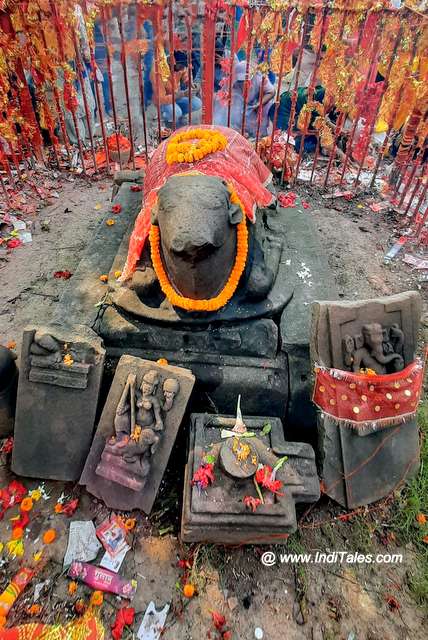
Behind the Nandi Mandap is a shed that is used for offering coconut to the deity. I liked the organized way of keeping the temple clean while also allowing devotees to offer all that they want to offer.
Shiva and Shakti
Inside the temple Shiva and Shakti reside together as Viniteshwara and Mundeshwari or as Mandaleshwara and Mandaleshwari. Many people call it a union, but I think this is usual for any Shiva and Shakti temple to have both, even if one of them is known prominently. For example, this temple is known as Mundeshwari Devi temple even though the central place is occupied by Shiva.
I saw mostly local devotees visiting the temple in huge numbers. They have faith that all their wishes will be fulfilled by the Devi and all their pains removed. A board at the temple also says that people come here to get puja done for their vehicles too, as much as they do for non-violent animal offerings.
There is another Shivalinga that is worshipped but is surrounded by fallen iron grills all around.
As you climb up and down the stairs, you would see people creating stone towers by delicately balancing stones over each other. This is a tradition that is so universal. I have seen this in Canada and deep in the Lahaul valley near Chandratal in Himachal Pradesh.
Architecture
It can be assumed that the stone used in this temple is either from the same hill or the surrounding Kaimur hills.
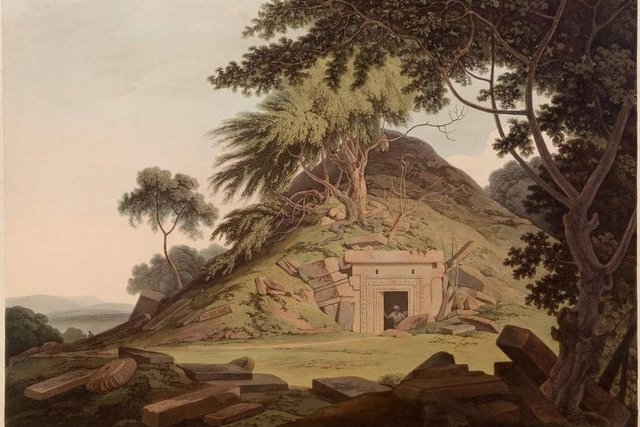
The temple is octagonal in shape, which is rare as most temples are either square or rectangular. Yogini temples are circular. This aspect itself makes this temple unique architecturally. The Shikhara on top of this north Indian Nagara-style temple is missing. A roof has been built as part of the restoration work. One can only speculate how the original Shikhara looked like.
The temple has 4 openings on all four sides facing the four cardinal directions. As of now, two doors are open, one is used to enter the temple while the other is used to exit it. The doors have beautifully carved doorjambs that include the figurines of Ganga, Yamuna, and Dwarpalas.
Sanctum
In the middle of the sanctum is a big Chatumukhalinga or a Shivalinga that is carved with faces on all four sides. I remember seeing a similar linga at a temple in Vaishali town of Bihar.
Big Murti of Mundeshwari Devi is in one of the Niches across the main entrance. It is a grand, overpowering, and impressive Murti, where your hands fold automatically when you stand in front of it. You can only see the face, but the priests and the literature tell me that she has 10 hands. She is standing on the Mahishasura after killing him.
Another niche has a Murti of Ganesha, Vishnu, and Surya inside the temple. There are many of them in the temple rubble outside. I could see so many pillars and amalakas that I am sure there were many temples here and not one.
Festivals
All Hindu festivals like Ram Navami and Shivaratri are celebrated in the temple.
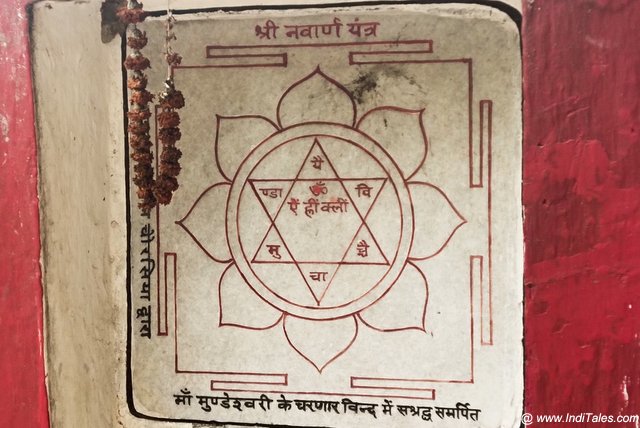
However, being a Devi temple, Navaratri is the most prominent festival celebrated in Spring and Autumn Navaratas. A grand mela or fair is held at the temple and thousands of people visit during this time.
On the Ashtami of Navratri, the temple stays open throughout the night.
Other Places To See
Harshu Brahma Dham located in Chainpur on the way to Varanasi is a popular place. This place is known for its occult practices to help you get rid of Bhoot Preta or the ghosts. Many people who are possessed come here to get rid of this problem.
I saw a unique offering of wooden Khadauns being made here. There are some temples around but avoid the astrologers here who would try to trap you.
Travel Tips
- Temple is open from Sunrise to Sunset every day. It closes for a brief period around noon for the deities need to rest. Additionally, on the date of Mahanavami, i.e. on the night between the Ashtami and Navami of Chaitra Navaratri, the temple stays open for the whole night.
- Apart from some Prasad shops, there are no eateries in and around the temple. So, either carry your food or plan to be satisfied with the basic Litti Chokha you get on the roadside around Chainpur.
- You can visit Mundeshwari Devi temple either from Varanasi or from Patna. Both the cities are well connected by Air, Rail and Road.
- Bhabhua is the closest Railway station, about 22 km from the temple.
- I could not find any facilities to stay around the temple, so it is best done from the closest city.
- Parking is just an open space and often faces traffic jams in and around the temple. You can also climb the hill through 500+ stairs if you are not using the vehicle to climb. From the car park, it is just a short flight of stairs.
- Photography is not allowed inside the temple but you can take pictures outside.
On an average day too there are many people at the temple, but with a little patience, you can easily do the darshan.






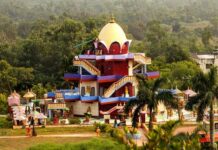
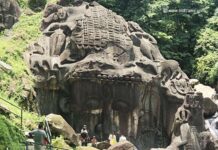
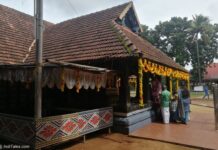





It’s truly awe-inspiring to visit a temple that has been continuously worshipped for over. The spiritual energy and historical significance make it a one-of-a-kind experience.
Excellent posting.. Keep writing more.. Wishing you all the success…
Incredible read! Mundeshwari Devi Temple truly stands as a symbol of India’s ancient spiritual heritage. It’s fascinating how this 2000+ year-old temple is still active and continues to attract devotees and history lovers alike.
Thanks for highlighting this underrated wonder of India!